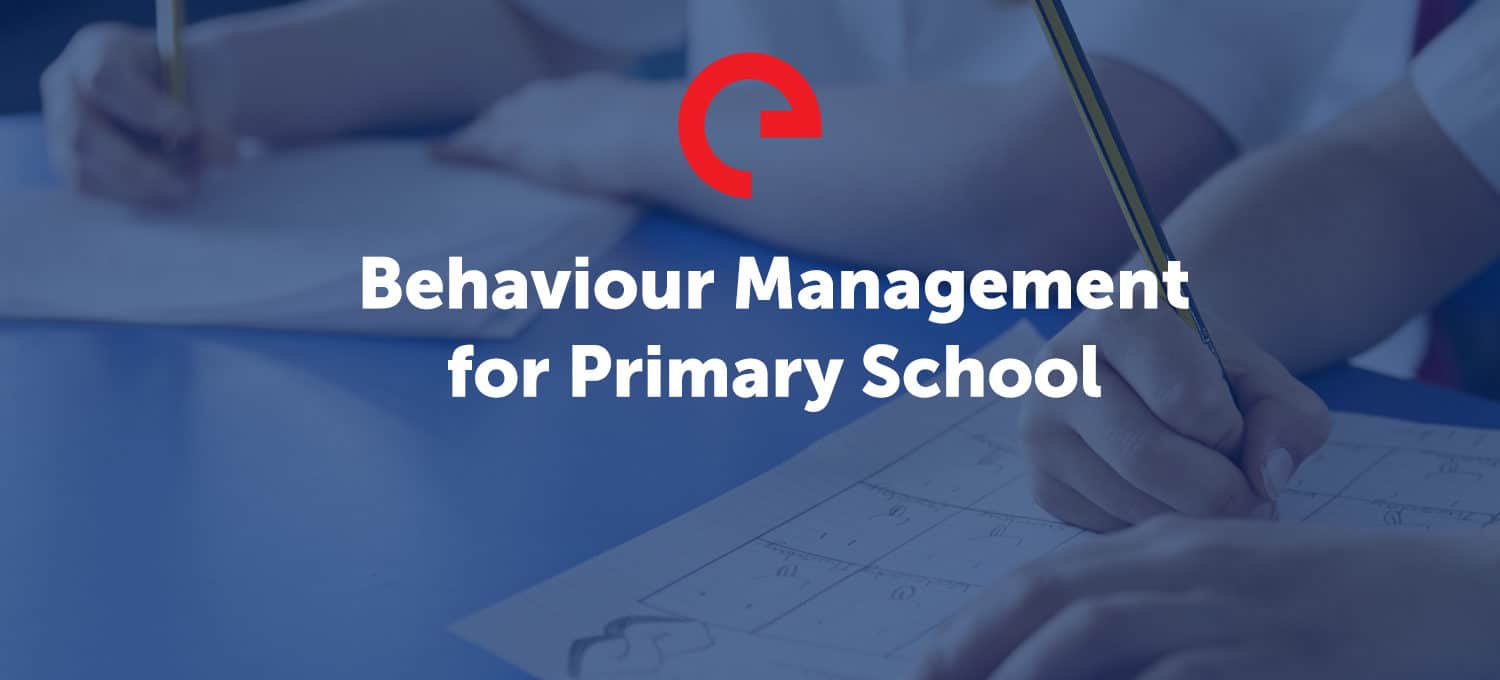
12th September 2019
Effective behaviour management strategies for primary school
Whether you’re an NQT or a teacher with decades of experience, anyone can struggle from time to time with behaviour management. When teaching in a primary setting, it can be difficult to know which strategies to implement for these young children who you may not be able to reason with as effectively as children in secondary school and beyond.
Effective behaviour management underpins successful teaching and learning in every lesson and also makes a long-term difference to pupils’ lives.
Behaviour Management
Here are some tried and tested tips to help get your primary pupils to behave in a positive way:
Set clear expectations
It should go without saying that if pupils don’t know how they are expected to behave, they are unlikely to conduct themselves as you’d hope. Setting clear and consistent expectations is the first step in behaviour management for all teachers, but especially so with these young pupils who require a foundation of expectations to build upon for their entire educational lives.
How to set clear expectations:
- “We keep our classroom tidy”
- “We say please and thank you”
- “We put our hands up when we have a question”
You can set out your expectations verbally, and ideally also through the use of an additional display in your classroom, helping your pupils to remember what is expected of them. By phrasing the expectations as “we” phrases, rather than “you” phrases (i.e. “you will keep your classroom tidy”) gives the pupils a sense of community pride and the classroom, and that it is everyone’s responsibility behave.
Counting down
There’s a reason this technique is a classic. Counting down from 10 when you want your pupils to be quiet gives them the time to finish what they are doing before returning to their desks, and gives you time to remain composed. This is far more likely to be effective than immediately saying “quiet please”, or worse, yelling it.
Use positive reinforcement
Time and again, research has shown that the carrot is better than the metaphorical stick in all situations, and especially with children. Using praise to encourage and reward good behaviour will stop poor behaviour before it even begins in many cases.
Try to avoid generic praise telling a child that they are simply “good”, and instead reward and praise specific behaviour both publicly in front of their peers in the class, and privately when you have a moment alone with a pupil at their desk or at the end of the lesson.
A well-placed encouraging word will give the pupil a great confidence boost that may last well past the end of the lesson and perhaps throughout their entire school lives and beyond.
The yellow card system
It is important that pupils know the range of penalties and interventions that can be made if they misbehave. A good way to do this is to implement a version of the “yellow card” system. Giving a child a verbal warning for the first instance of bad behaviour, then a yellow card in the second instance, and then a penalty or intervention, gives the pupil a chance to self-correct their behaviour.
If the same pupil immediately received the penalty (what interventions are used will differ between schools) in the first instance, they may become angry and defiant, and misbehave even more, rather than self-correct their behaviour.
The yellow card system can be implemented across the entire school for an effective whole-school approach to behaviour management.
Same-day discipline
Your school may use a variety of methods to penalise children for misbehaviour, and these will usually be outlined in their behaviour policy. Interventions and penalties may include “quiet time” away from the rest of the class for reflection, or missing a play or lunchtime session.
Whatever methods your school employs, these should be communicated effectively to pupils before they are needed, and you should avoid “shaming” pupils in front of their peers.
Corrective action should be taken as close in time to the misbehaviour as possible, so the young pupil can remember how they behaved and associate it with the penalty they were given. Once the penalty is over, you should make sure to speak to the pupil and make sure you to show them you are not angry or disappointed in them, but that it is now their responsibility to behave as expected.
Class pride
Letting pupils feel that they have a part in the ownership of the classroom is another effective strategy in managing their behaviour. When they have a hand in creating displays, or deciding where things get put away, they are more likely to take pride in their classroom and help keep everything neat and tidy.
Teaching with Engage
All teachers are welcome to join our free CPD sessions, including those on behaviour management, which are run by our expert Partnership & Development team of former senior leaders.
If you’re ready to try your hand with some of these behaviour management strategies, but need a school to do them in, get in touch with us and let one of our friendly consultants find the perfect teaching role for you!
Your career. Your choice.
At Engage, we do our best to help you connect with our other Australian and Kiwi teachers in England - people who can show you how to settle in,
Register here!Recommended for you
Ways to support your students during Ramadan
What is Ramadan? Ramadan, the ninth month of the Islamic calendar has...
- Your Career
- •
- 3 Min Read
Safer Internet Day 2024
What is Safer Internet Day? Safer Internet Day is a globally celebrated...
- Your Career
- •
- 3 Min Read
How to prepare for a successful school year as a teacher
The beginning of a school year can be daunting and nerve-racking but...
- Your Career
- •
- 3 Min Read

